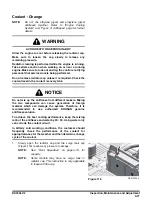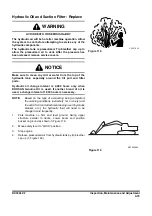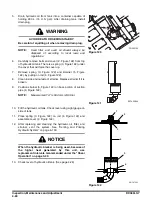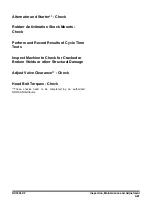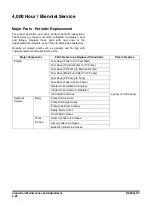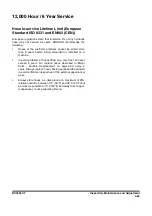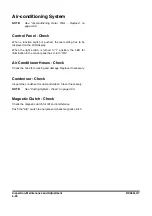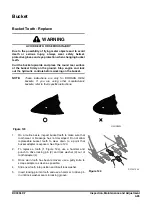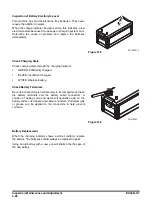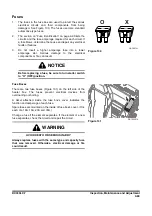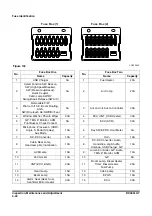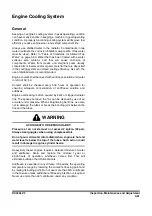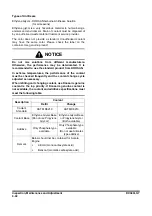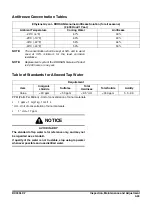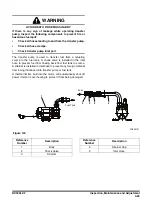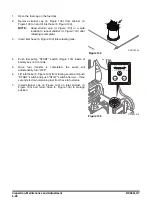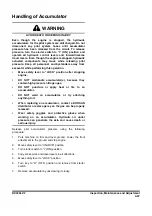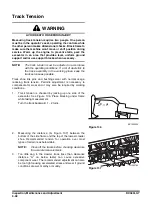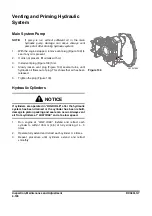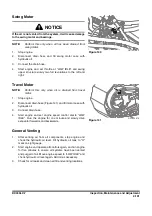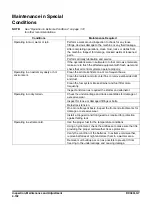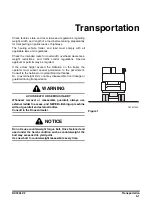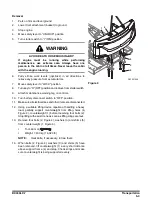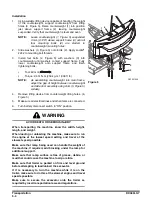
Inspection, Maintenance and Adjustment
4-91
DX380LC-7
Engine Cooling System
General
Keeping an engine's cooling system in peak operating condition
can have many benefits in keeping a machine in good operating
condition. A properly functioning cooling system will improve fuel
efficiency, reduce engine wear, and extend component life.
Always use distilled water in the radiator. Contaminants in tap
water neutralize the corrosion inhibitor components. If tap water
must be used, Refer to "Table of Standards for Allowed Tap
Water" on page 4-93. Water that has been treated with a water
softener also contains salt that will cause corrosion of
components. Water from creeks and stagnant pools usually
contain dirt, minerals and/or organic material that are deposited
in the cooling system and impair cooling efficiency. As such, the
use of distilled water is recommended.
Engine coolant shall be mixed with antifreeze solution and water
in ratio of 50 : 50.
Coolant shall be checked every 500 hours of operation for
ensuring adequate concentration of antifreeze solution and
additives.
Engine overheating is often caused by bent or clogged radiator
fins. The spaces between the fins can be cleaned by use of air
or water under pressure. When straightening bent fins, use care
not to damage the tubes or break the bonding joint between the
fins and the tubes.
Heavy-duty diesel engines require a balanced mixture of water
and antifreeze. Drain and replace the mixture 1 year or
2,000 hours of operation, whichever comes first. This will
eliminate buildup of harmful chemicals.
Antifreeze is essential in any climate. It broadens the operating
temperature range by lowering the coolant's freezing point and
by raising its boiling point. Do not use more than 50% antifreeze
in the mixture unless additional antifreeze protection is required.
Never use more than 60% antifreeze under any condition.
WARNING
AVOID DEATH OR SERIOUS INJURY
Pressure at air nozzle must not exceed 2 kg/cm
2
(28 psi).
Always wear goggles when using compressed air.
Do not pour cold water into radiator when engine is hot and
water level is below the top of the tubes. Such action could
result in damage to engine cylinder heads.

